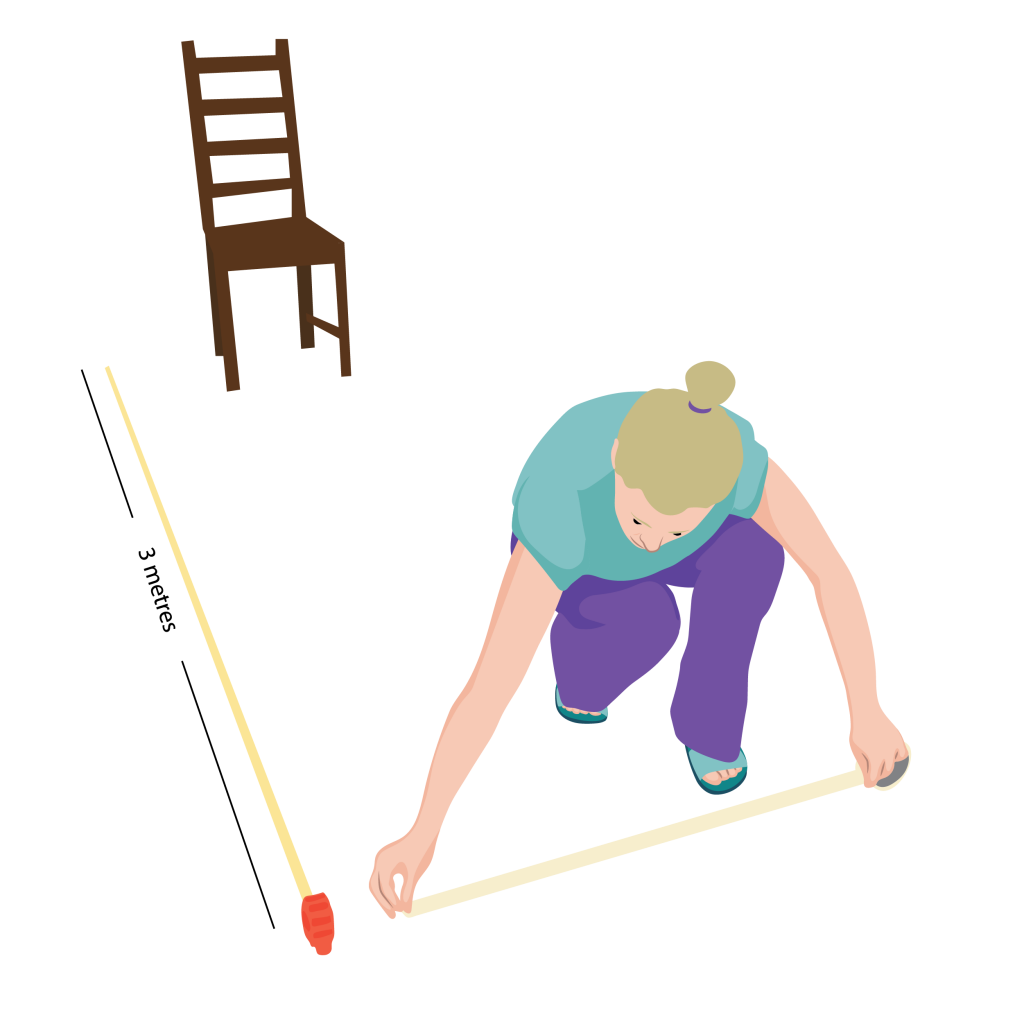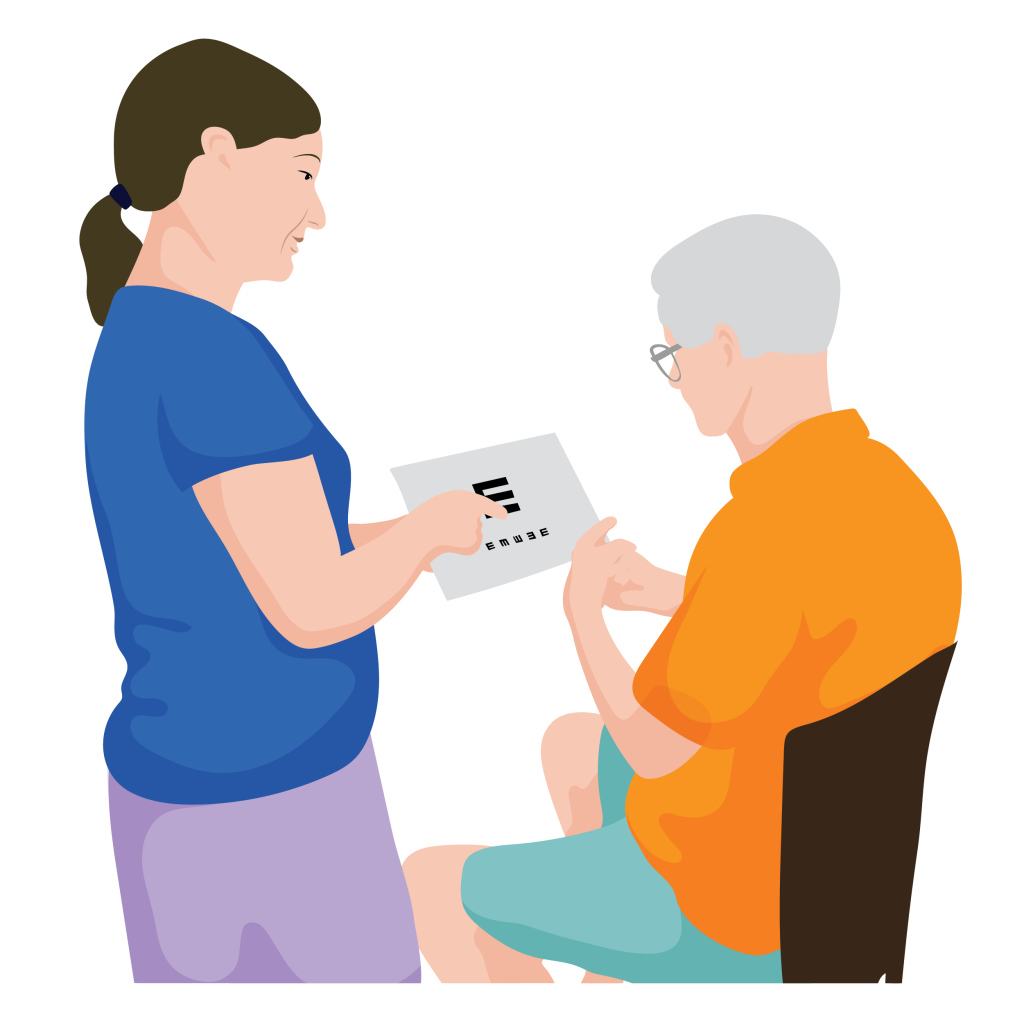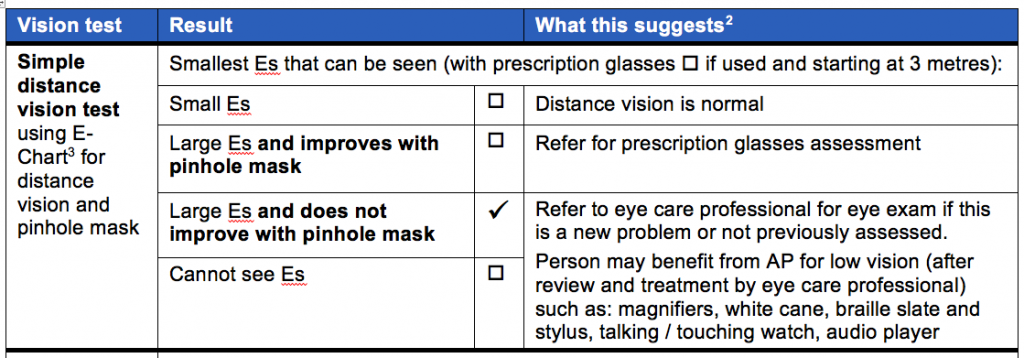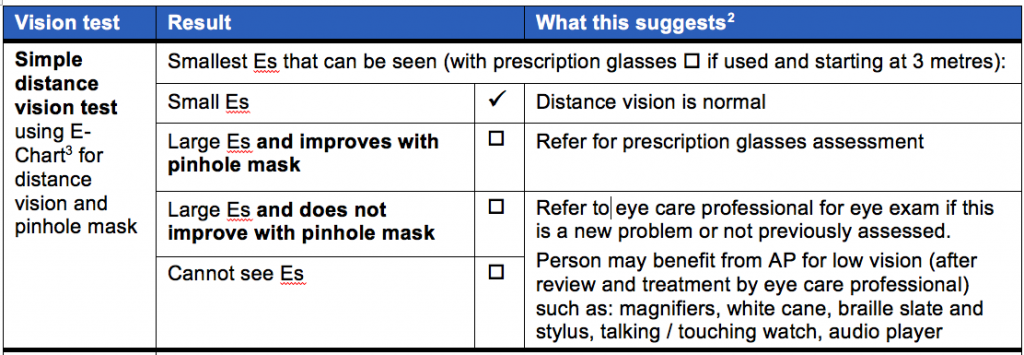The distance vision E-Chart
The E-Chart used for the TAP vision screen was developed by Brian Holden. It is a simple tool, appropriate only for screening, not for a full vision assessment.
Практическое задание
Identify the distance vision side
Note that there are 2 rows:
- Одна большая буква "E" (6/60)
- 5 smaller Es (6/12)
The numbers (6/60) and (6/12) describe the size of the Es.
Note that the testing distance is marked at 3m.
Hold it up to your face and look through the pin holes. For some people with poor distance vision, looking through the pins can help to improve their distance vision.

Prepare the space
The distance vision test starts with the person looking at the distance E chart from 3 metres away.
Подготовьте помещение:
- Mark where you will stand with the E-Chart
- Place a chair so the backrest is 3m from where you will stand with the E-Chart
If you are carrying out a vision screen in different locations, it can be helpful to have a 3m length of string that you can use to measure the distance.

Подготовьте пациента
Попросите человека сесть на стул и покажите ему электронную карту.
Explain to them:
- This test is to see how well they see into the distance
- During the test you will ask them to look at E’s on the chart
- For each E you point to, they need to indicate the direction of the “legs” of each “E”. They can do this with their hands, or words
Practice with them so you know they understand.
Вопрос
If the person has glasses that were prescribed to help them see into the distance, they may wear them during the test. Note on the vision screen form that the test was done with their glasses.
If the person has glasses however:
- They are not sure what they were prescribed for
- They are not prescription glasses
- They are someone else’s prescription glasses
Then they should not wear them. Wearing the wrong glasses during the test could lead to a false test.
Test method
Test one eye at a time. The person may wear prescription glasses if they are theirs and were prescribed for them. If not sure, test without.
Stand 3m from the person, holding up the distance vision E Chart. Ask the person to cover one eye with their hand.
Test the large E:
- Point to the large E and ask the person the direction of the legs
- Rotate the E-Chart so the legs face in different directions and ask four more times
If the person correctly indicates the direction of the legs at least 4 times, test the small Es.
If not, ask them to try looking through the pinhole mask with the eye being tested.
Test the small Es:
Point to the small Es. Ask the person the direction of the legs for each E in the row.
- If the person correctly indicates the direction of the legs at least 4 times it is likely their distance vision is normal
If the person cannot clearly see the small Es, ask them to try again looking through the pinhole mask with the eye being tested.
Test the 6/60 Es again to see if the pinhole mask improves their level of vision.
Repeat for the other eye.
Нажмите на видео, чтобы узнать, как выполнить простую проверку зрения на большое расстояние
Record results
Record the results of the simple distance vision test on the vision screen form. You need only check the box that indicates the smallest Es that the person could see (with or without the pinhole mask)
Практическое задание
Read the examples of a simple distance vision text. Look at the vision screen form, distance vision section. Which box would you tick on the vision screen form for the following people?
David was able to correctly indicate the direction of the legs of the large E five times. He found the small Es harder, and was correct with the direction of the legs only twice. He tried again looking through the pin hole mask however did no better.

Only the Large Es and does not improve with pinhole mask is checked
Almah was able to correctly indicate the direction of the legs of the large E and small Es every time. She did not use the pinhole mask.

Only the Small Es row is checked.